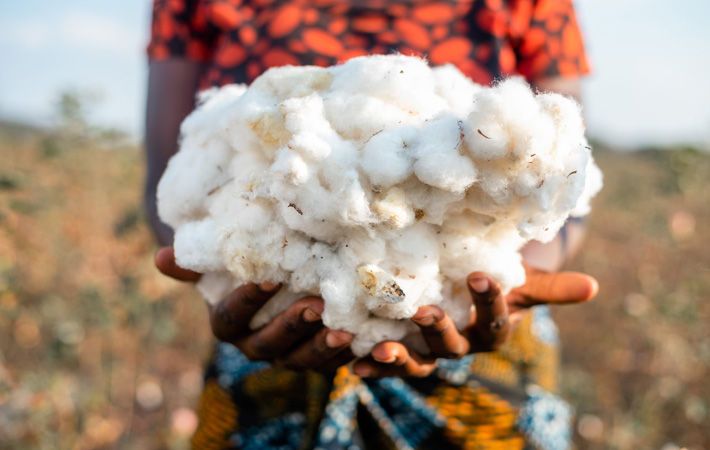
Natural Fibres vs Synthetic Fibres in Fast Fashion
The Fabric of Our Choices: Natural Fibers vs Synthetic Fibers in Fast Fashion
The fashion industry is one of the most polluting and resource-intensive industries in the world. From cotton farming to textile production, the environmental impact of fashion is staggering. One of the key factors contributing to this impact is the type of fibres used in clothing production. Natural fibres and synthetic fibres have distinct differences in terms of their environmental footprint, durability, and sustainability. In this blog post, we will examine the distinctions between natural and synthetic fibres, their influence on the fast fashion industry, and their impact on the planet.
Natural Fibres: A Sustainable Choice
Natural fibres are derived from plants, animals, or minerals. Examples of natural fibres include cotton, wool, silk, linen, and hemp. These fibres are biodegradable, breathable, and often require less processing than synthetic fibres. Natural fibres have been used for centuries, and many traditional textile practices still rely on these materials.
Cotton, for instance, is one of the most widely used natural fibres in clothing production. However, conventional cotton farming is resource-intensive and relies heavily on pesticides, fertilisers, and irrigation. Organic cotton farming, on the other hand, uses fewer chemicals and promotes more sustainable agricultural practices.

Wool is another natural fibre that is prized for its warmth, durability, and breathability. Sheep farming, however, can have significant environmental impacts, including land degradation and water pollution. Nevertheless, regenerative farming practices can help mitigate these effects and promote biodiversity.
Synthetic Fibres: Convenience at What Cost?
Synthetic fibres, such as polyester, nylon, and spandex, are made from petrochemicals and are often cheaper and more durable than natural fibres. These fibres are widely used in fast fashion due to their affordability, versatility, and ease of production. However, synthetic fibres have a significant environmental impact.
The production of synthetic fibres requires large amounts of energy and resources, contributing to greenhouse gas emissions and pollution. Microplastics, which are tiny plastic particles that can harm marine life, are also released during the washing of synthetic fibres. Furthermore, synthetic fibres are non-biodegradable and can take hundreds of years to decompose.
The Impact of Fast Fashion

Fast fashion has become a dominant business model in the fashion industry, prioritising speed, low costs, and trendy designs. This approach has led to an explosion of synthetic fibre use, contributing to environmental degradation and waste. Fast fashion's "take, make, dispose" approach perpetuates a culture of disposability, with garments often worn only a few times before being discarded.
The environmental impact of fast fashion is staggering. The production of synthetic fibres contributes to greenhouse gas emissions, water pollution, and microplastic release. The Industry's reliance on cheap labour and resources also perpetuates social injustices and exploitation.
The Consequences of Synthetic Fibre Dominance
The dominance of synthetic fibres in fast fashion has severe consequences for the environment and human health. Microplastics, for instance, have been found in marine life, and there is growing concern about their impact on human health. The production of synthetic fibres also contributes to air and water pollution, affecting both ecosystems and human communities.
Furthermore, the fast fashion business model perpetuates a culture of waste and disposability. Garments are often designed to be worn briefly and discarded, contributing to textile waste and pollution. This approach also promotes overconsumption, encouraging consumers to buy more than they need.
Sustainable Alternatives

So, what can we do to mitigate the impact of synthetic fibres and fast fashion? One approach is to prioritise natural fibres and sustainable textile practices. Organic cotton, recycled fibres, and regenerative farming practices can help reduce the environmental footprint of clothing production.
Another approach is to adopt a slower, more mindful approach to fashion consumption. This can involve buying second-hand clothing, investing in high-quality garments, and caring for clothes to extend their lifespan. Consumers can also demand more transparency and accountability from fashion brands, pushing them to adopt more sustainable practices.
The Future of Fashion
The future of fashion depends on our ability to adopt more sustainable practices and prioritise the well-being of both people and the planet. This involves a shift away from fast fashion's "take, make, dispose" approach and towards a more circular and regenerative model.
Fashion brands can play a key role in driving this shift by prioritising sustainable materials, reducing waste, and promoting transparency and accountability. Consumers can also make a difference by choosing sustainable fashion options, caring for their clothes, and demanding more from the fashion industry.
The choice between natural fibres and synthetic fibres has significant implications for the environment

and the fashion industry. While synthetic fibres may offer convenience and affordability, their environmental impact is undeniable. By prioritising natural fibres, adopting sustainable textile practices, and promoting a slower, more mindful approach to fashion consumption, we can help mitigate the impact of fast fashion and create a more sustainable future for the industry.
As consumers, we have the power to drive change by making informed choices about the clothes we buy and the brands we support. By choosing sustainable fashion options and demanding more.



